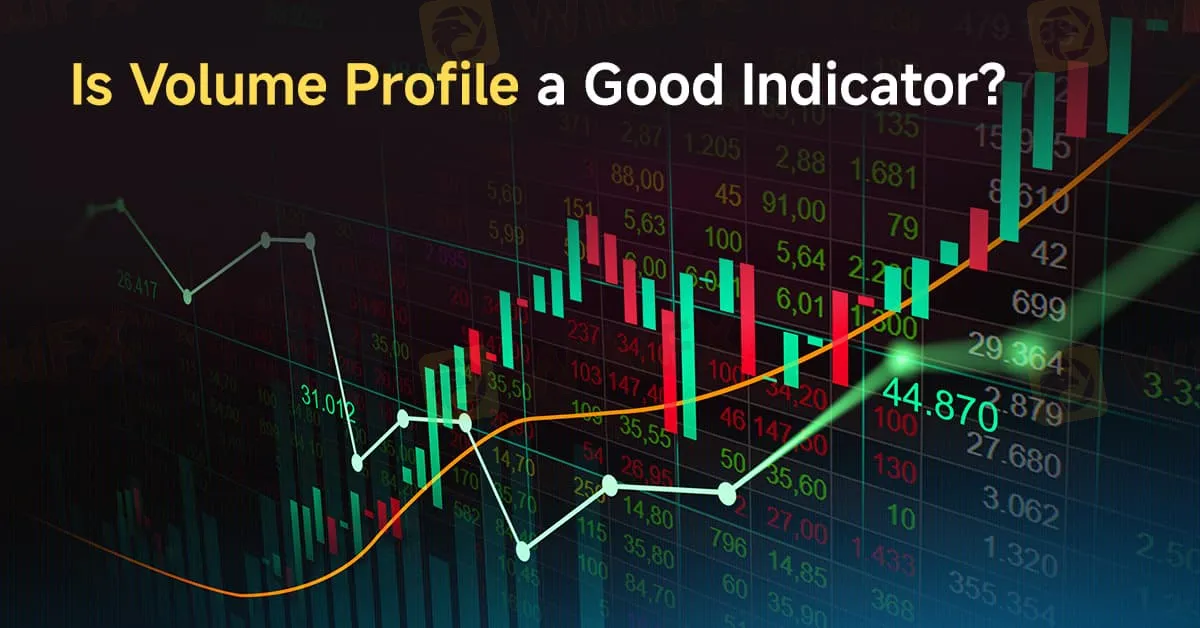简体中文
繁體中文
English
Pусский
日本語
ภาษาไทย
Tiếng Việt
Bahasa Indonesia
Español
हिन्दी
Filippiiniläinen
Français
Deutsch
Português
Türkçe
한국어
العربية
Is Volume Profile a Good Indicator?
Abstract:The Volume Profile shows the amount of volume traded at different price intervals over a specified period. It is displayed as horizontal bars, usually overlaid on the price chart. Each horizontal bar represents the volume that occurred in that price range over a specified time. The Volume Profile can be set to the current session, such as that day, or multiple sessions, like the total Volume Profile for the last twenty days.

What Is Volume Profile?
The Volume Profile shows the amount of volume traded at different price intervals over a specified period. It is displayed as horizontal bars, usually overlaid on the price chart. Each horizontal bar represents the volume that occurred in that price range over a specified time. The Volume Profile can be set to the current session, such as that day, or multiple sessions, like the total Volume Profile for the last twenty days.
Why Is Volume Profile Important?
Most Technical Tools Look at the Same Information
Most technical analysis indicators derive calculations from the price, which is why most of them lag. Because theyre derived from price, most indicators usually show information traders can see from the price chart alone. In short, most technical tools have everyone looking at the same information and chasing the same ideas, giving little to no edge.
Volume Profile is Different from Most Other Technical Tools
Volume Profile is not derived from price or lagging, which is rare in technical analysis. Volume Profile shows the activity that ultimately drives price movement—trading volume activity at different price levels. This is not data that traders can see from the price chart alone or even traditional volume bars.
Volume Profile Has Incredible Accuracy Down to the Lowest Timeframes
Most other indicators pick up a lot of meaningless noise on lower timeframes, reducing their accuracy. Volume Profile suffers less from this flaw because it uses “primary data” rather than being derived from the price or other data.
Incorporating Volume Profile into Your Trading Strategy
Decide How Far Back to Build the Volume Profile on Your Chart
For example, a 20-day Volume Profile setting will build the cumulative Volume Profile over the last 20 trading days.
Mark Out the Distribution Blocks and Ledges to Find Support and Resistance Levels
Determine Price Levels Above or Below to Be Comfortable Being Long or Short
Common Mistakes to Avoid When Using Volume Profile
Not Using Multiple Time Frame Analysis
Not Identifying Distribution Blocks
Overtrading Unclear Setups
Not Having a Trading Plan or Managing Risk
Pros & Cons of Using the Volume Profile Indicator
Pros
1. Volume Profile lets you see significant levels that often cannot be found from the price chart alone.
2. It is not a lagging indicator.
3. Traders can use Volume Profile independently or with other strategies.
Cons
1.It is a discretionary tool without fixed rules that takes time to learn.
2.Not all charting platforms support Volume Profile.
Conclusion
Volume Profile is a unique and powerful tool in the realm of technical analysis, providing insights into market behavior that other indicators might miss. By highlighting key price levels based on trading volume, it offers traders a distinctive edge. However, like any tool, it requires practice and understanding to use effectively. Integrating Volume Profile into your trading strategy can enhance your market analysis and trading decisions, but its essential to be aware of its limitations and ensure it fits within your overall trading plan.

Disclaimer:
The views in this article only represent the author's personal views, and do not constitute investment advice on this platform. This platform does not guarantee the accuracy, completeness and timeliness of the information in the article, and will not be liable for any loss caused by the use of or reliance on the information in the article.
Read more

What Are The Common Types of Unregulated Forex Brokers?
Protect your investments from unregulated forex brokers with these tips. Learn about red flags, scams, and how the WikiFX app ensures safe trading experiences worldwide.

Pros and Cons of Choosing Unregulated Forex Brokers
Discover the pros and cons of unregulated forex brokers, explore risks, benefits, and key features, and learn how to evaluate their credibility with the WikiFX app.

5 Questions to Ask Yourself Before Taking a Trade
Before executing any trade, traders should pause and ask themselves critical questions to ensure they are making rational and well-informed decisions. Here are five questions to help you reflect on your strategy, manage risk, and control emotions before entering the market.

The Psychology of Investment Scams: Understanding Why Victims Fall Prey
Investment scams have become increasingly sophisticated, preying on human psychology to exploit vulnerabilities. While these fraudulent schemes promise extraordinary returns, they often rely on psychological tactics to deceive victims. Understanding these factors can help traders recognise and avoid falling for scams.
WikiFX Broker
Latest News
Spotware Unveils cTrader Store, Global Marketplace for Algo Creators
Elderly Trader Loses RM2.1M in WhatsApp Forex Scam
Gigamax Scam: Tracking Key Suspects in RM7 Million Crypto Fraud
Singaporean Arrested in Thailand for 22.4 Million Baht Crypto Scam
Trader Turns $27 Into $52M With PEPE Coin, Breaking Records
ASIC Sues HSBC Australia Over $23M Scam Failures
WikiFX Review: Is IQ Option trustworthy?
CFI Partners with MI Cape Town, Cricket Team
Doo Financial Expands Reach with Indonesian Regulatory Licenses
5 Questions to Ask Yourself Before Taking a Trade
Currency Calculator



